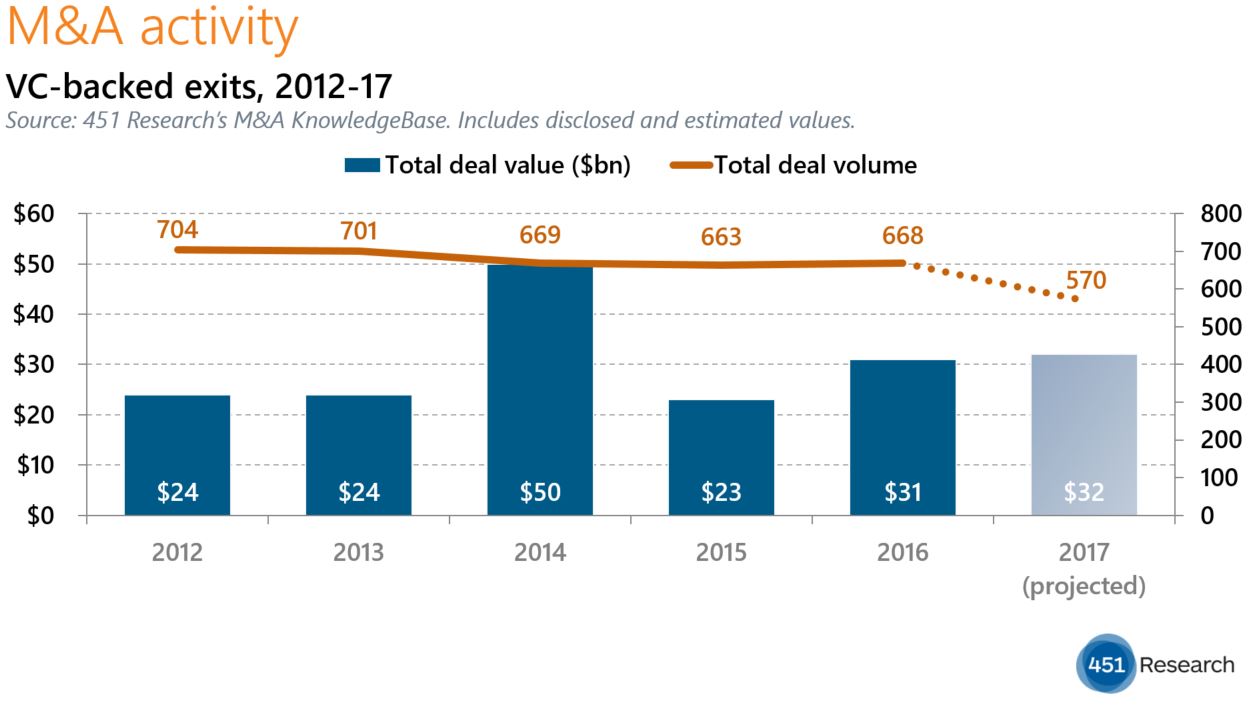Contact: Brenon Daly
Unveiling what would be the largest tech transaction in history, Broadcom said it is prepared to hand over $103bn in cash and stock, and assume some $25bn in debt, for Qualcomm. The unprecedented 12-digit pairing represents a consolidation of the two consolidators behind the semiconductor industry’s two largest consolidations.
To get a sense of the sheer scale of Broadcom’s ambitions, consider that this single deal would roughly match spending on all acquisitions in the chip industry from 2008-14, according to 451 Research’s M&A KnowledgeBase. However, regulatory challenges mean this marriage of giants highly is unlikely to go through. And that assumes Qualcomm even picks up negotiations with Broadcom and its relatively low opening bid.
Thus far, Qualcomm has pretty much dismissed Broadcom’s offer. That doesn’t mean Broadcom, which is being banked by six separate firms, won’t push the deal.
Broadcom is negotiating from a position of strength, while Qualcomm is suffering through a well-publicized legal fight with major customer Apple and has still come up empty in its high-risk effort to buy its way into new growth markets. (Qualcomm originally hoped to close its $39.2bn purchase of NXP Semiconductors, which makes chips for cars and Internet of Things deployments, by the end of this year. That appears unlikely, and Broadcom has said it wants to acquire Qualcomm whether NXP closes or not.)
Broadcom’s relative strength also comes through in the pricing of the transaction as it is currently envisioned. At an enterprise value of $130bn, Broadcom is valuing Qualcomm at just 3.9x its pro forma 2017 sales of $33bn. (That assumes Qualcomm, which will put up about $24bn in sales in 2017, does buy NXP, which will generate $9bn in sales.) That’s substantially lower than the 5.5x sales Qualcomm plans to pay for NXP on its own, and a full three turns lower than the nearly 6.9x 2017 sales where Broadcom trades on its own.



